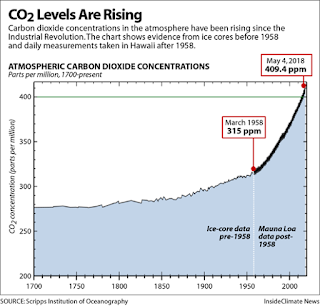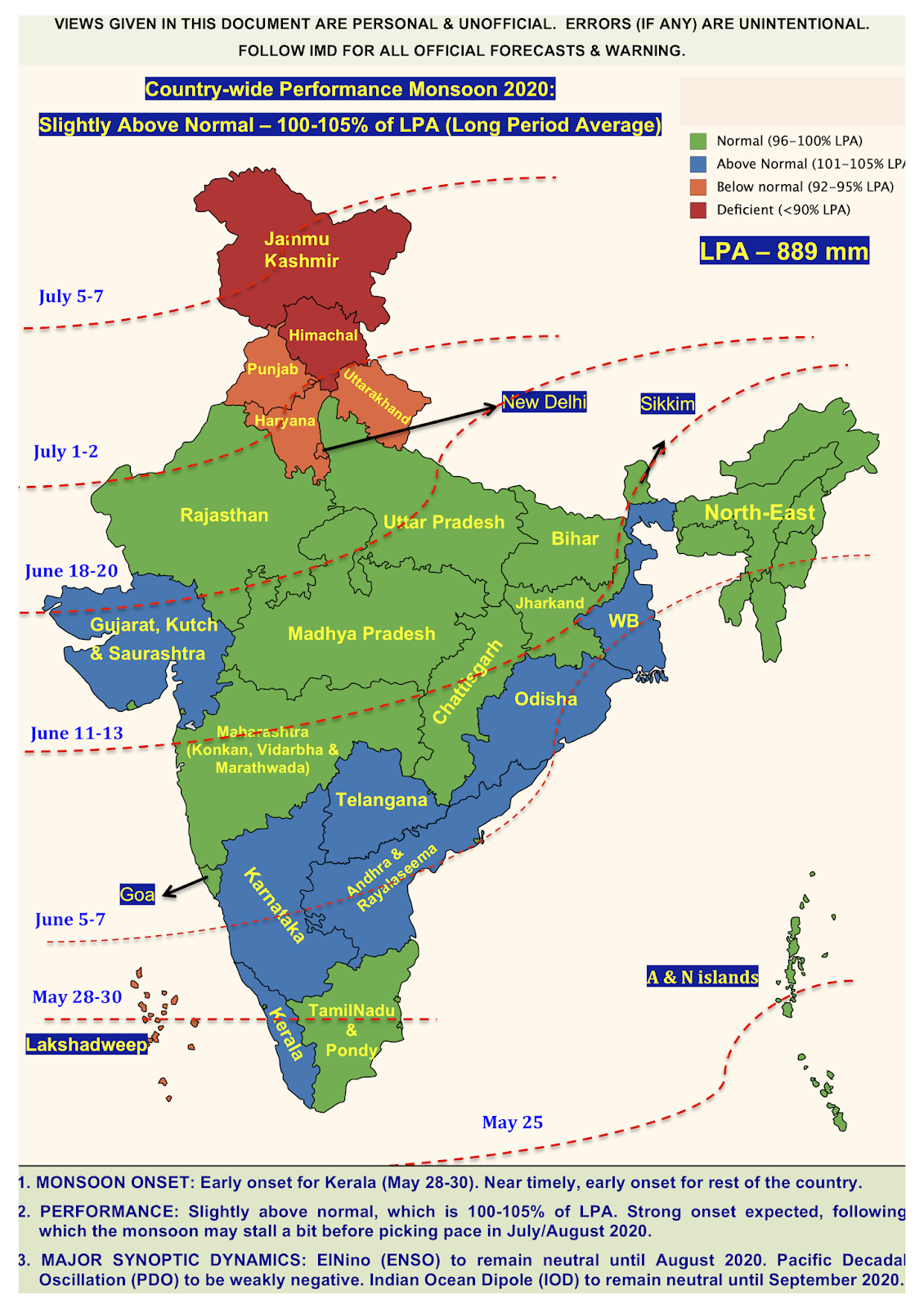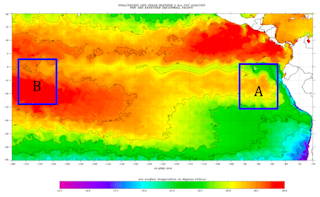EFFECT OF "NATION-WIDE LOCKDOWN" ON INDIAN WEATHER PATTERNS
******
Abstract:
Nation-wide lockdown has lead to reduced emissions and has definitely improved the air quality. However, there is no consensus on how the local temperature and cloud patterns are affected. Using some basic open source data and weather dynamics concept, I am going to show that the lockdown will have inverse effect on temperature, wherein we could expect warmer temperatures and increasing heat-wave like situations in April and May 2020.
Moreover, due to increased heating, it is possible that thunderstorm activity will increase and some intense thunderstorms could be in the offing in May 2020.
******
Ever since the national lockdown, the quality of air that we breathe has improved substantially. There is absolutely no opposition to the fact that the AQI index has drastically come down in all the Indian cities. So much so that people have been enjoying the beautiful view of snow clad Himalayan mountain ranges from miles way. On the coastal side, there have been some spotting of dolphins and in the national parks the serene wildlife has never experienced such newly found freedom (well at least since human encroachment started).
Abstract:
Nation-wide lockdown has lead to reduced emissions and has definitely improved the air quality. However, there is no consensus on how the local temperature and cloud patterns are affected. Using some basic open source data and weather dynamics concept, I am going to show that the lockdown will have inverse effect on temperature, wherein we could expect warmer temperatures and increasing heat-wave like situations in April and May 2020.
Moreover, due to increased heating, it is possible that thunderstorm activity will increase and some intense thunderstorms could be in the offing in May 2020.
******
Ever since the national lockdown, the quality of air that we breathe has improved substantially. There is absolutely no opposition to the fact that the AQI index has drastically come down in all the Indian cities. So much so that people have been enjoying the beautiful view of snow clad Himalayan mountain ranges from miles way. On the coastal side, there have been some spotting of dolphins and in the national parks the serene wildlife has never experienced such newly found freedom (well at least since human encroachment started).
On the flip side, there have been a lot of debate on how the lockdown is going affect the weather patterns, since the vehicular, industrial, and burning emissions have been substantially reduced. I will try and address this question in this blog.
So the hypothesis that I have framed is as follows:
With reduced emissions of greenhouse gases (CO2, methane, nitrous oxide, and water vapor) and aerosols (soot and sulphate), (i) will the temperature over land reduce or increase? & (ii) Will it change the cloud patterns and affect the thunderstorm driven rains?
---------
With this hypothesis, let's embark on some fact checking.
1. Greenhouse gases: It is well known that the greenhouse gases cause global warming by trapping the heat and releasing it slowly, thereby resulting in a gradual rise of atmohsperic as well as oceanic temperatures. Out of the four GGs, namely, CO2, CH4, N2O, and H2O, the primary contributors are CO2, and H2O.
The reason is CO2 is released in abundant and can stay in atmosphere for centuries (100's of years) before completely vanishing. On the other hand CH4 has a residence time of only few days (7-8 days). Nitrous oxide has a residence time of 100 years, but N2O is released in very small quantities (ppb compared to CO2 which is in ppm).
See the images where I am showing that CO2 level has been rising and as of 2020, we already have abundant CO2 in the atmosphere.
Second thing to note here is the relative amount of CO2 (in parts per million) in comparison with N2O (parts per billion). This shows that CO2 is present in atmosphere in three orders of magnitude more than N2O.
Coming to water vapor (H2O), evaporation from ocean will lead to abundant H2O. However, H2O also has a limited life time, of the order of few days to week, since it will form into clouds and precipitate. Nevertheless, H2O is an important GG, since its presence will cause heating. This we clearly see on a cloudy day, where heat is trapped and night time temperature goes up.
The TL-DR version of above is as follows: Out of the four greenhouse gases, produced due to emissions, CO2 and H2O are primary contributors to warming temperatures.
Now, let us assume that 100% of CO2 emissions are absent since March 24, 2020.
India's per capita CO2 emission for an year is around 2 metric tonnes. Given the population, this number for a country as a whole becomes 2 billion metric tonnes. So, as per my calculation, this figure is now equivalent to 0.04 parts per million (ppm) of emission in a given month.
So basically we have only been able to reduce 0.04 ppm of CO2 emission due to the nation-wide lockdown. Compare this to the already existing 400 ppm of global CO2 (this figure is as of 2020) in the atmosphere. This means that the lockdown hardly had any effect on reducing the CO2, given that there is already a lot of CO2 floating in the atmosphere.
As CO2 increases, we know that the atmospheric temperature increases. As temperature increases, the moisture holding capacity of air increases (warm air holds more moisture). Therefore, the water vapor content in atmosphere also increases.
The existing level of high CO2 + H20 will lead to warmer weather.
Now, the story doesn't end there. We also have aerosol effects (soot+sulphate).
2. Aerosols: Aerosols have two-pronged effect, they either cool or heat (depending on their color) and help in Cloud condensation by acting as cloud condensation nuclei (CCN).
Now, due to lockdown, emissions have reduced and hence soot & sulphate particles have also reduced.
Soot is black in color and hence will absorb the sun light and cause more warming. No emission so no soot, so we are not creating ANY additional warming.
Sulphate is colourless, so will cause cooling, since it will reflect the sunlight.
The presence of sulphate is important since it causes cooling and to a very very small extent offset the warming effect of CO2. However, the absence of any sulphate means this COOLING EFFECT is missing.
Remember, soot & sulphate are particles so have smaller residence times in atmosphere (they can only linger for few days to weeks, unlike CO2, which stays for centuries). Hence sulphate has a more quicker and localised effect.
SUMMING IT UP:
Already abundant CO2 is present, so lockdown has no effect of CO2 as such ---> temperature increases
Water vapor is in abundant due to warming ---> temperature increases
Soot is absent ---> so no additional warming ---> no effect on temperature
Sulphate is absent ----> so no cooling ---> temperature to remain high.
Conclusion #1 : The lockdown would likely have INVERSE EFFECT where the cooling due to sulphate is absent and hence will lead to "increasing temperatures".
-------
-------
Coming to Hypothesis #2: Effect on clouds.
Soot particles trap heat and lead to cloud evaporation and dispersion.
Sulphate aerosols help in cloud formation by acting as CCN.
So in absence of soot, clouds will linger for a longer time, but their formation is going to be affected since no sulphate is present. However, some amount of sea sulphate is still present (sea salt moving from the ocean), which acts as CCN. (Note: the sea sulphate won't result in much cooling since the quantity is less compared to the sulphate coming from emission).
Hence, it is expected that the clouds will form, but will not evaporate quickly. Now due to increased temperatures, it is expected that enhanced convection (due to intense ground heating) will occur, this could lead to monstrous cumulonimbus clouds and heavy thunderstorm events
Conclusion #2 : Due to increasing temperatures, the convective activity is going to increase, leading to intense cloud formation. Without soot, the clouds will linger for a longer time, which could lead to some "intense thunderstorm activity in April & May".
One could very well witness a repeat of the thunderstorms that happened over the NCR region during May 2018 (https://scroll.in/article/878105/as-north-india-braces-for-thunderstorms-vague-weather-alerts-are-of-little-help).
Such thunderstorms could happen anywhere over India, not necessarily North India.
****************************
My over-arching conclusion:
I have a personal feeling that in April & May 2020, we could experience some intense thunderstorm activity over India as well as intense heat wave events.
****************************
Conclusion #2 : Due to increasing temperatures, the convective activity is going to increase, leading to intense cloud formation. Without soot, the clouds will linger for a longer time, which could lead to some "intense thunderstorm activity in April & May".
One could very well witness a repeat of the thunderstorms that happened over the NCR region during May 2018 (https://scroll.in/article/878105/as-north-india-braces-for-thunderstorms-vague-weather-alerts-are-of-little-help).
Such thunderstorms could happen anywhere over India, not necessarily North India.
****************************
My over-arching conclusion:
I have a personal feeling that in April & May 2020, we could experience some intense thunderstorm activity over India as well as intense heat wave events.
****************************
I am not going to cover the effect of lockdown on Monsoon, since monsoon has its own dynamics and is controlled by synoptic features, unlike thunderstorms that are highly governed by local dynamics.
-------------
Disclaimers:
1. Note that this is only a data-driven analysis and not a scientific. research-based analysis.
2. The content given here are all personal views and the author will not be held responsible or held liable for any oversight or misinterpretation.






What would be the impact on the Ozone Hole. Will this shrink with reduced pollution?
ReplyDelete